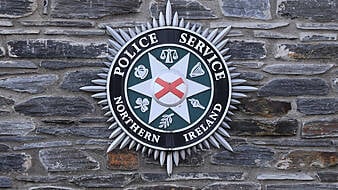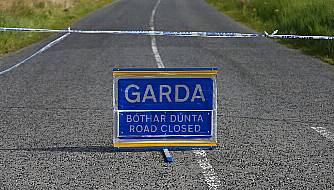A State pathologist has told a murder trial that due to surgical intervention it is difficult to estimate the depth of the injury that resulted in the death of Mongolian national Urantsetseg Tserendorj.
Ms Tserendorj was stabbed in the neck on a walkway between George’s Dock and Custom House Quay in the IFSC, Dublin on January 20th 2021.
A 16-year-old male, who cannot be named as he is a minor, has pleaded not guilty to the murder of Ms Tserendorj but guilty to her manslaughter on January 29th, 2021.
He has also pleaded guilty to producing a knife and to attempting to rob Ms Tserendorj on January 29th, 2021.
The plea of manslaughter was not accepted by the State and the trial is ongoing at the Central Criminal Court.
Doctor Heidi Okkers, forensic pathologist with the Office of the State Pathologist, on Wednesday gave evidence that she conducted the post-mortem on Ms Tserendorj on February 3rd, 2021.
Dr Okkers said she identified a surgical incision of 12cm on the deceased from just below the right earlobe below the angle of the jaw towards the neck.
She confirmed that there was suturing in the neck from surgical intervention. She said that there was no postoperative haemorrhage, meaning the suturing was successful in stopping the bleeding.
She said that the only injury was just below the earlobe, and this was a horizontal partially healed stab wound of 1.5cm. She said that the partial healing was due to the time lapse between the injury and the time of death. This “penetrating stab wound” was approximately 5cm above the bifurcation of the carotid artery, the main vessel in the neck which branches into two.
Dr Okkers explained that this artery branches into the external and internal carotid artery, with the external supplying the blood to the scalp and face, and the internal supplying the blood to the right side of the brain. She said that the internal artery had been transected in Ms Tserendorj.
An internal examination showed the deceased woman's brain was swollen. Dr Okkers said that when the blood supply is cut off, the brain starts to swell as the tissue is dying.
"When the artery is severed, no blood is going to the brain. It is almost like a stroke. There is no oxygen going so eventually the brain will die," said Dr Okkers.
Dr Okkers said she identified a haemorrhage tract of 6cm, but it was difficult to estimate the full depth of the injury due to the surgical intervention. She said that the artery is 1.5cm beneath the surface of the skin.
Counsel for the prosecution, Seán Guerin SC asked her to confirm that the instrument used penetrated to a depth of 1.5cm and up to 6cm, but she could not be certain of the depth of the injury.
Dr Okkers confirmed this. She also said that a knife could have caused this injury, a knife similar to the one she was shown in garda evidence.
"No natural pathology could have caused death," she said.
Dr Okkers said that the cause of death was global cerebral hypoxia, which is failure of the function of the brain due to loss of blood.
Mr Guerin asked the witness to confirm that once the internal carotid artery is transected then the process of loss of oxygen to the brain begins.
Doctor Okkers said this begins immediately and is not reversible.
Mr Guerin said that Ms Tserendorj suffered a partial transection of the internal carotid artery.
She was declared dead due to the absence of brain stem function on 29 January 2021.
In response to cross-examination by defence counsel Michael O'Higgins SC, Dr Okkers said that due to the surgical intervention, it was difficult to say the exact extent of the injury as the intervention may have involved some cutting by the surgeon.
"I can't say how deep the surgical intervention was," she said.
"If the side of the artery was transected, clearly it went in 1.5cm?" asked Mr O'Higgins.
"At least," replied Dr Okkers.
"But after that, there are unknown quantities?" asked defence.
Dr Okkers confirmed this was correct. She said the blade "had to go in 1.5cm, perhaps more".
"But beyond the area where the blade made contact, you're not able to say if it was made by the blade or surgical intervention?" asked Mr O'Higgins.
"Due to the surgical intervention, it is difficult to say the exact extent of the tract," replied Doctor Okkers.

The jury of six men and six women were shown CCTV footage of January 20th, 2021 in which the movements of Ms Tserendorj and the accused were recorded.
Detective Garda Patrick Murphy told Mr Guerin that Ms Tserendorj can be seen on the night leaving her place of work at State Street Global Advisors on Sir John Rogerson’s Quay and making her way on foot through the city.
The accused can be seen riding a bicycle through the streets. Det Murphy said the accused can be seen approaching Ms Tserendorj along the walkway before he dismounts the bicycle, and an encounter takes place between the two.
The trial continues before the jury and Mr Justice Tony Hunt.







